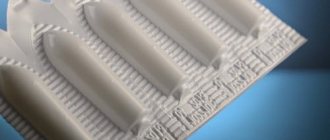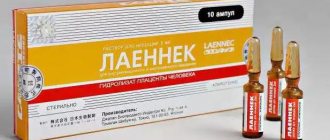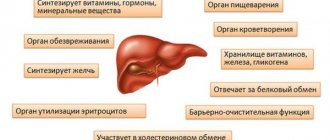| Amlodipine | |
| Amlodipine | |
| Chemical compound | |
| IUPAC | (±)-2-[(2-aminoethoxy) methyl] −4-(2-chlorophenyl) −1,4-dihydro-6-methyl-3,5 - pyridine dicarboxylic acid 3-ethyl 5-methyl ester |
| Gross formula | C₂₀H₂₅ClN₂O₅ |
| Molar mass | 408.879 g/mol |
| CAS | 88150-42-9 |
| PubChem | 2162 |
| DrugBank | APRD00520 |
| Classification | |
| ATX | C08CA01 |
| Pharmacokinetics | |
| Bioavailable | 64 — 90% |
| Metabolism | mainly in the liver |
| Half-life | 30 – 50 hours |
| Excretion | It is excreted by the kidneys, with bile and through the intestines, as well as with breast milk. |
| Dosage forms | |
| Capsules, tablets | |
| Method of administration | |
| orally | |
| Other names | |
| Amlodipine, Norvasc (Pfizer) and others Aladin, Normodipin, Cardilopin, Amlotop, Amlocard, Normaded, Omelar Cardio, Stamlo, Kalchek, Acridipine, Amlovas, Cordi Cor, Norvadin, Agen, Corvadil, Amlorus, Amlodifarm, Amlo, Amlong, Amlodak, Amlodil, Zorem, Azomex, Semlopin, S-Numlo | |
| Amlodipine at Wikimedia Commons | |
Amlodipine
- 3rd generation slow calcium channel blocker, has antianginal [1] and hypotensive effects. The drug is a mixture of stereoisomers.
Pharmacologically active is S-amlodipine[2].
S(-)-amlodipine - the active levorotatory isomer of amlodipine - a blocker of slow L-type calcium channels. Blocks the entry of calcium ions through membranes into the smooth muscle cells of the myocardium and blood vessels. R-amlodipine is an active dextrorotatory isomer, which is responsible for the antisclerotic, antioxidant and antiproliferative properties of the drug. The mechanism of hypotensive action is due to a decrease in the tone of the vascular wall. The antianginal effect is realized by reducing the total peripheral resistance of the peripheral vascular resistance, afterload, myocardial oxygen demand, reducing the tone of the coronary vessels and preventing vasospastic reactions. After oral administration, it is well absorbed, absolute bioavailability is 64-80%.
The half-life is 35-50 hours, which allows it to be used once a day as a pharmacological drug.
Pharmacological action[ | ]
A dihydropyridine derivative, 3rd generation BMCC, has an antianginal and hypotensive effect. By binding to dihydropyridine receptors, it blocks calcium channels, reduces the transmembrane transition of Ca2+ into the cell (more into vascular smooth muscle cells than into cardiomyocytes). The antianginal effect is due to the expansion of the coronary and peripheral arteries and arterioles: in case of angina pectoris, it reduces the severity of myocardial ischemia; by expanding peripheral arterioles, it reduces peripheral vascular resistance, reduces afterload on the heart, and reduces myocardial oxygen demand. By expanding the main coronary arteries and arterioles in unchanged and ischemic areas of the myocardium, it increases the supply of oxygen to the myocardium (especially with vasospastic angina); prevents the development of constriction of the coronary arteries (including those caused by smoking). In patients with angina pectoris, a single daily dose increases the time of physical activity, slows down the development of angina and “ischemic” depression of the ST segment, reduces the frequency of angina attacks and nitroglycerin consumption. It has a long-term dose-dependent hypotensive effect. The hypotensive effect is due to a direct vasodilating effect on vascular smooth muscle. For arterial hypertension, a single dose provides a clinically significant reduction in blood pressure over 24 hours (in the patient’s “lying” and “standing” position). Does not cause a sharp decrease in blood pressure, a decrease in exercise tolerance, or a decrease in left ventricular ejection fraction. Reduces the degree of left ventricular myocardial hypertrophy, has an antiatherosclerotic and cardioprotective effect in coronary heart disease. Does not increase the risk of death in patients suffering from chronic heart failure (NYHA class III-IV) during therapy with digoxin, diuretics and ACE inhibitors. It has no effect on myocardial contractility and conductivity, does not cause a reflex increase in heart rate, inhibits platelet aggregation, increases the glomerular filtration rate, and has a weak natriuretic effect. In diabetic nephropathy, it does not increase the severity of microalbuminuria. Does not have adverse effects on metabolism and plasma lipids. The onset of effect is 2-4 hours; duration - 24 hours.
Instructions for use
Normodipine is taken orally. The initial dose for the treatment of arterial hypertension and angina pectoris is 5 mg 1 time per day. The maximum daily dose is 10 mg. For arterial hypertension, the maintenance dose is 5 mg per day. No dose changes are required when administered concomitantly with thiazide diuretics, beta-blockers and ACE inhibitors.
In elderly patients, the half-life of amlodipine may increase and creatinine clearance may decrease. No dose changes are required, but patients should be monitored more closely. No dose changes are required in patients with renal insufficiency.
Pharmacokinetics[ | ]
Absorption is slow, does not depend on food intake, is about 90%, bioavailability is 60-65%. TCmax for oral administration is 6-12 hours. With continuous use, Css is created in 7-8 days. Volume of distribution - 21 l/kg. Bonding with plasma proteins is 90-97%. Penetrates the blood-brain barrier. Intensively (90%) is metabolized in the liver with the formation of inactive metabolites, has a “first pass” effect through the liver. T1/2 on average is 35 hours. Total clearance is 500 ml/min. T1/2 in patients with arterial hypertension is 48 hours, in elderly patients it increases to 65 hours, with liver failure - up to 60 hours, similar parameters for increasing T1/2
½ are also observed in severe chronic heart failure; in case of impaired renal function, it does not change. It is not removed by hemodialysis. Excreted by the kidneys - 60% in the form of metabolites, 10% unchanged; with bile and through the intestines - 20-25% in the form of metabolites, as well as with breast milk.
Indapamide or amlodipine - comparison and which is better - Website about
Diseases of the heart and blood vessels are now considered the most common in the world and are the most common cause of death in modern society.
Moreover, with age, such diseases become more and more common (children most often have congenital pathologies, and acquired ones are extremely rare).
In connection with this trend, the development and introduction of new pharmacological drugs is considered a vital necessity in our time.
Now in pharmacies you can find a huge variety of pharmacological drugs used to treat cardiac diseases. Particular attention is paid to antihypertensive medications, since high blood pressure worries almost all people after fifty years of age.
Amlodipine is considered one of the most effective and time-tested antihypertensive drugs.
If this medication cannot be prescribed, analogues to replace it must be selected with special care in order to ensure the desired therapeutic effect without causing any harm to the patient’s body.
When are Amlodipine substitutes prescribed?
There are a number of situations in which it may be necessary to replace it with some other drug with a similar therapeutic effect. Most often, you need to select an analogue if:
- individual intolerance to the medication has arisen;
- an allergic reaction has appeared (may manifest itself in the form of itching, rash on the skin (exanthema) or mucous membranes (enanthema), anaphylactic shock).
Some patients may experience unwanted side effects that make it impossible to take the prescribed medication.
The choice of medication used for treatment may also be affected by cost. Because some imported drugs have a very high price, and not everyone can afford constant treatment with them.
Varieties of analogues
Analogue typeDescription
| From the same pharmacological group to which the main medication belongs | At the same time, there is a high risk that this drug will not be suitable for the patient, because individual intolerance very often occurs to all representatives of one group at once. |
| Medicines from the group of ACE inhibitors, angiotensin type II receptor antagonists, imidazole receptor blockers | The risk of allergic reactions is minimal |
Norvasc or Amlodipine: which is better?
The main active ingredient of Norvasc is amlodipine, which is why there are no fundamental differences between these drugs. But Norvask is produced in Germany, so it is considered higher quality.
Randomized studies have proven that the percentage of complications from the use of Norvasc is slightly lower. This gives reason to say that, naturally, it is better to choose Norvask, but its high cost can stop many.
The list of indications and contraindications is the same for both medications, but even despite this, you cannot switch from one drug to another on your own.
Felodipine or Amlodipine: what to choose
Both Felodipine and Amlodipine have the same effects as both block calcium ion channels. The compared products have a fairly long-lasting effect and are well absorbed in our gastrointestinal tract.
Felodipine improves the well-being of patients by reducing systolic and diastolic blood pressure and normalizing the content of sodium ions in the blood and intercellular fluid, which prevents the accumulation of fluid in tissues and the appearance of edema. Many doctors consider it inappropriate to change the main medication to Felodipine due to the fact that these pharmacological drugs are too similar to each other.
Normodipine or Amlodipine: comparative characteristics
Normodipine is considered a higher quality and more effective medicine, so many patients prefer it. The cost of Normodipine is eight to ten times higher than the price of Amlodipine (an average package will cost about 50 rubles). Normodipine costs 450-500 rubles at the pharmacy.
Normodipine is produced in Germany, and Amlodipine is produced by domestic pharmaceutical companies.
The mechanism of action of both medications is similar and is not fundamentally different (they initiate relaxation of the vascular wall due to changes in calcium metabolism).
Amlotop as an analogue
In fact, Amlotop and Amlodipine are listed as the same drug, only produced by different companies in different countries. The indications and contraindications for prescribing these drugs are the same. The effectiveness is also equal; there is no reliable evidence that any of these drugs is better or worse. Adverse reactions to their use are equally rare.
Lerkamen or Amlodipine: which is better?
These medicines have different active ingredients, but they both belong to the same group of drugs. Amlodipine has more different dosages, which may be an advantage for those who do not want to break pills.
Lerkamen has a slightly shorter effect, but it can also be taken only once a day. The maximum effect of the first medication develops six hours after ingestion, and Lerkamen within one and a half to two hours.
Losartan or Amlodipine: comparative characteristics
Losartan belongs to the group of angiotensin receptor antagonists and also promotes peripheral vasostriction, but realizes this effect through a different mechanism. It is possible to say which drug is better only in relation to an individual patient, since Losartan has its own contraindications and specific prescriptions.
Indapamide or Amlodipine: what to choose
Indapamide is a diuretic that lowers blood pressure by reducing the amount of fluid in the bloodstream.
This mechanism of action is fundamentally different from that of Amlodipine, so it cannot be said that Indopamide can replace a medication from the group of calcium channel blockers.
The most rational solution would be to prescribe both of these drugs together, rather than just one.
Amlorus as an analogue
Amlorus has the same composition, therefore it is characterized by a similar mechanism of action and a list of indications and contraindications for use. The difference between these funds lies only in the manufacturing companies and is insignificant in cost. There is no data that can confidently say that any of these drugs is more effective or safe.
Table comparing drug analogues by cost. The last data update was 10/21/2019 00:00.
Other imported analogues
In addition to the medicines described above, you can find many other imported drugs with similar effects in pharmacy windows.
Below we provide a brief description of some of them:
Drug nameDescription
| Escordicore | A drug produced in Iceland. Belongs to the same group, therefore it also reduces blood pressure by reducing peripheral vascular tone |
| Nifecard | A calcium channel blocker of the dihydropyridine series, which is produced in Jordan. It is also prescribed for hypertension and for the prevention of heart failure after a heart attack. |
| Corinfar | A medicine that is produced in Germany and Croatia. The active substance is nifedipine, which disrupts the flow of calcium ions through slow channels. |
How can I replace Amlodipine if my legs are swollen?
Some patients (about ten to fifteen percent) taking Amlodipine to treat hypertension experience a side effect such as swelling of the lower extremities. In this case, you need to select a substitute that will not lead to the development of such complications.
In such a situation, you can try replacing the medication with the following drugs:
- Valsartan, Aprovel, Atacand (drugs that block type 2 receptors for angiotensin).
- Moxinidine is an I1-imidazoline receptor antagonist that combats high blood pressure by blocking receptors in the central nervous system.
- Lisinopril, Enalapril and other angiotensin-converting enzyme inhibitors. However, when taking these medications, another complication may occur in the form of a long, painful dry cough.
Table comparing drug analogues by cost. The last data update was 10/21/2019 00:00.
Patient reviews
- Elena, 64 years old.
I took Amlodipine for a long time, and then I was advised to have a better substitute - Normodipine, which is produced in Germany. I switched to it with the hope of high German quality, but did not feel any significant changes. The pressure was the same (did not rise above 135), the state of health also remained the same (occasionally headaches bothered me). I returned to Amlodipine because Normodipine did not justify its very high cost, so not always everything that is more expensive is better. You need to select pills only based on your own well-being. - Anton, 49 years old.
I have been suffering from high blood pressure for several years now and for this reason I have been taking Amlodipine, prescribed to me by a cardiologist. Once the pharmacy didn't have it, so I bought Felodipine instead. I drank the whole pack and didn't feel any difference at all. But then the doctor at the appointment said that you cannot change the pills yourself, since some may require recalculation of the dosages. - Katerina, 53 years old.
I have been suffering from stage 3, stage 2 hypertension for more than seven years. Over the past six months, my blood pressure has become unstable, even despite constantly taking all the necessary medications. I was advised to change Amlodipine to Losartan, but my attending physician thought that it would be more correct not to replace the medication, but to add Losartan to it. I have been treated with this combination for more than a month now and I can note that my health has improved significantly and my blood pressure numbers have become stable.
Source:
Online magazine about choosing the best goods and services
20.07.2019 16:14:00
Expert: Boris Kaganovich
Find out the answer to the question: “Which is better Nifedipine or Amlodipine?” possible after familiarization with the parameters of the drugs. These pharmaceutical developments make it possible to stabilize blood pressure. The effectiveness of the medications is confirmed by numerous positive reviews from patients.
Doctors do not advise treating yourself. If pressure drops occur, cardiologists urge you to be examined by specialized medical authorities.
After a thorough examination, the doctor will suggest the optimal medication regimen and prescribe a rational dosage of drugs for inpatient observation.
Experts from the magazine “Expertologi” in this article present important information about Nifedipine or Amlodipine: what is the difference and what is better, the usefulness of which will help in the effective treatment of hypertension.
Nifedipine
Nifedipine is a complex drug that blocks calcium channels.
The main effect of the drug is to dilate the walls of blood vessels, as well as reduce the need for the myocardium to consume large amounts of oxygen.
Regular use of the medication leads to a decrease in blood pressure + correction of heart function. The positive effect can be noticed 60 minutes after taking the tablet.
Contraindications
Hypotension is the first contraindication for the use of Nifedipine. In second place is renal failure plus glomerulonephritis, in which the pressure increases due to renal dysfunction, that is, due to impaired tubular filtration.
You should not take the drug if the following phenomena occur:
- Angina pectoris.
- Individual characteristics of the body (drug intolerance).
- High pressure in the arteries.
- Left ventricular failure of the highest degree.
- Spasm of small vessels.
- Aortic valve stenosis.
- Pregnancy or breastfeeding.
Young or adolescent under 14 years of age. For this category of patients, there are less gentle drugs. Nifedipine can lead to impaired sexual development, decreased performance, and mental retardation due to hypoxia of brain tissue.
Important! This medicine is a persistent + fast-acting type, in a growing body, the endocrinological system is not fully developed, the kidneys work faster, so blood pressure can sharply drop to the lowest parameters: 40/20 mmHg, which is fraught with fainting.
Rules of application
The specific dosage is selected by a specialist from a medical institution for each patient individually according to a special scheme. Nifedipine is presented in the form of tablets that are intended for internal use.
It is recommended to take the medicine after eating; you should not chew the medicine, but you must wash it down with water. The standard dosage for the treatment of arterial hypertension is 10 mg taken two to three times a day, depending on blood pressure parameters.
Source: https://sosh16zernograd.ru/sport/indapamid-ili-amlodipin-sravnenie-i-chto-luchshe.html
Contraindications[ | ]
Hypersensitivity (including to other dihydropyridines), severe arterial hypotension, pregnancy, lactation.
Use with caution in the following conditions: arterial hypotension, aortic stenosis, chronic heart failure, liver failure, acute myocardial infarction (and within 1 month after), hypertrophic cardiomyopathy (subaortic stenosis), mitral stenosis, sick sinus syndrome, age up to 18 years old (efficacy and safety of use have not been established), elderly age.
Pregnancy and breastfeeding[ | ]
Pregnancy[ | ]
Adequate and strictly controlled studies on the safety of amlodipine during pregnancy have not been conducted. It is not known whether the drug causes immediate or delayed adverse effects on the fetus.
Use during pregnancy is contraindicated.
Breastfeeding[ | ]
There are no data indicating the excretion of amlodipine in breast milk. However, other calcium channel blockers (dihydropyridine derivatives) are known to be excreted in breast milk.
It is necessary to avoid breastfeeding if amlodipine is prescribed.
Normodipine
Active substance:
Amlodipine*
Pharmgroup:
Calcium channel blockers
Average price in pharmacies
| Name | Manufacturer | average price |
| Normodipine 0.005 n30 tablet | Gedeon Richter OJSC | 341.00 |
| Normodipin 0.01 n30 tablet | Gedeon Richter OJSC | 635.00 |
Analogs for the active substance:Acridipine Amlovas Amlodak Amlodigamma Amlodipine Amlodipine Alkaloid Amlodipine Cardio Amlodipine Sandoz Amlodipine-Agio Amlodipine-Biocom Amlodipine-ZT Amlodipine-Prana Amlodipin-Teva Amlodipine-Chaikapharma Amlodipine besylate Amlodipine besilate Amlodipine maleate Amlodifarm Amlocard-Sanovel Amlong Amlonorm Amlorus Amlotop Vero-Amlodipine Kalchek Cardilopin Corvadil Cordy Core Norvask Omelar Cardio Stamlo Stamlo M Tenox | Application area:Heberden's disease Heberden's disease Vasorenal hypertension Vasospastic angina Prinzmetal's vasospastic angina Variant angina Sudden increase in blood pressure Sudden increase in blood pressure Hypertensive circulatory disorder Hypertensive circulatory disorder Hypertensive state Hypertensive state Hypertensive crises Hypertensive crises Hypertension Hypertension Arterial hypertension Arterial hypertension Hypertension is malignant Hypertension is malignant Hypertension, symptomatic Essential hypertension Hypertonic disease Hypertensive crises Hypertensive crises Hypertensive crisis Hypertensive crisis Hypertension Angina pectoris Malignant hypertension Malignant hypertension Malignant hypertension Malignant hypertension Isolated systolic hypertension Cardiospasm Coronary spasm Coronarospastic angina of Prinzmetal Hypertensive crisis Hypertensive crisis Exacerbation of hypertension Exacerbation of hypertension Primary arterial hypertension Renal hypertension Prinzmetal angina Angina attack Renovascular arterial hypertension Renovascular hypertension Recurrent angina Symptomatic arterial hypertension Spasm of the coronary arteries Spasm of coronary vessels Spontaneous angina Stable angina Angina syndrome X Angina pectoris Angina (attack) Coronarospastic angina Angina pectoris Angina at rest Prinzmetal's angina Angina pectoris progressive Mixed angina Angina pectoris spontaneous Angina pectoris stable Transient arterial hypertension Transient arterial hypertension Chronic stable angina Essential arterial hypertension Essential arterial hypertension Essential hypertension Essential hypertension |
Side effects[ | ]
From the nervous system:
Headache, dizziness, excessive fatigue, drowsiness, mood changes, convulsions; rarely - loss of consciousness, hypoesthesia, paresthesia, tremor, asthenia, malaise, insomnia, nervousness, depression, unusual dreams, anxiety; very rarely - ataxia, apathy, agitation, amnesia.
From the digestive system
Nausea, abdominal pain; hyperbilirubinemia, jaundice, increased activity of “liver” transaminases; rarely - dry mouth, anorexia, vomiting, constipation or diarrhea, dyspepsia, flatulence, gum hyperplasia; very rarely - gastritis, increased appetite, pancreatitis.
From the cardiovascular system
Palpitations, swelling of the ankles and feet, shortness of breath, flushing of the face, rarely - rhythm disturbances (bradycardia, ventricular tachycardia, atrial flutter), chest pain, decreased blood pressure, orthostatic hypotension; very rarely - development or worsening of heart failure, extrasystole, migraine.
From the genitourinary system
Rarely - pollakiuria, painful urge to urinate, nocturia, sexual dysfunction (including decreased potency); very rarely - dysuria, polyuria.
From the musculoskeletal system
Rarely - arthralgia, arthrosis, myalgia (with long-term use); very rarely - myasthenia.
From the skin
Very rarely - xeroderma, alopecia, dermatitis, purpura.
Allergic reactions
Skin itching, rash (including erythematous, maculopapular rash, urticaria).
Others
Rarely - visual impairment, conjunctivitis, diplopia, eye pain, accommodation disturbance, xerophthalmia, ringing in the ears, gynecomastia, back pain, feeling of heat and “flushing” of blood to the face, chills, weight gain, dyspnea, nosebleeds, increased sweating, thirst; very rarely - cold sticky sweat, cough, rhinitis, parosmia, taste perversion, hyperglycemia.
Special instructions[ | ]
Safety of use during pregnancy and lactation has not been established. There is no experience of use in children. During treatment, it is necessary to monitor body weight and be observed by a dentist (to prevent pain, bleeding and gum hyperplasia). Amlodipine does not affect plasma concentrations of K+, glucose, triglycerides, total cholesterol, LDL, uric acid, creatinine and urea nitrogen. Despite the absence of withdrawal syndrome in BMCC, a gradual dose reduction is recommended before stopping treatment.
Indications for use
The drug Normodipin has antihypertensive (Greek anti - against; Lat. hyper - tensio tension) and antianginal (Greek anti - against; Lat. angina - angina pectoris) properties. This determines the indications for use and makes Normodipin in demand for monotherapy, as well as for complex treatment:
- persistent arterial hypertension;
- vasospastic angina caused by spasms of the coronary vessels;
- stable angina pectoris;
- myocardial ischemia - consequences of damage to the coronary arteries.
Normodipine does not negatively affect metabolism and does not come into contact with blood lipids, which makes it accessible to patients with gout, diabetics, and asthmatics.
Interaction[ | ]
Inhibitors of microsomal oxidation increase the concentration of amlodipine in plasma, increasing the risk of side effects, and inducers (lat. inductor, causative agent) of microsomal liver enzymes reduce. The hypotensive effect is weakened by NSAIDs, especially indomethacin (Na+ retention and blockade of Pg synthesis by the kidneys), alpha-agonists, estrogens (Na+ retention), sympathomimetics. Thiazide and loop diuretics, beta-blockers, verapamil, ACE inhibitors and nitrates enhance the antianginal and hypotensive effects. Amiodarone, quinidine, alpha1-blockers, antipsychotic drugs (neuroleptics) and BMCC may enhance the hypotensive effect. Does not affect the pharmacokinetic parameters of digoxin and warfarin. Cimetidine does not affect the pharmacokinetics of amlodipine. When used together with Li+ drugs, it is possible to increase the manifestations of their neurotoxicity (nausea, vomiting, diarrhea, ataxia, tremor, tinnitus). Ca2+ preparations can reduce the effect of BMCC. Procainamide, quinidine and other drugs that cause QT prolongation enhance the negative inotropic effect and may increase the risk of significant prolongation of the QT interval.
A randomized trial of the drug under the auspices of the US Department of Health was conducted as part of ALLHAT.
Analogues that do not cause swelling of the legs
The main side effect of Amlodipine, which forces specialists and patients to look for a replacement, is swelling of the lower extremities. In this case, replacement is performed with such drugs as Valsartan, Perindoprl, Lortenza, Tenliza. These are the most popular analogs of Amlodipine that do not cause swelling of the legs.
Valsartan
Valsartan is an antihypertensive medication that selectively acts on AT1 receptors responsible for the activation of angiotensin-2. Valsartan does not affect the concentration of cholesterol and glucose in the blood, which is why it is prescribed to patients suffering from edema of the lower extremities.
Properties of Valsartan
Valsartan is prescribed for the treatment of:
- hypertension;
- heart failure;
- in combination with beta blockers and ACE inhibitors.
Perindopril
Perindopril is an ACE inhibitor (angiotensin-converting enzyme) that has a vasodilatory effect by blocking angiotensin-1 and angiotensin-2.
As a result of this effect on the body, the drug:
- reduces the synthesis of aldosterone;
- increases the activity of plasma blood components – renin;
- reduces total arterial resistance;
- normalizes the functionality of myocardial cells;
- reduces the risk of developing tachycardia.
In patients with heart failure, the drug showed the following results:
- reduction in the blood filling pressure index of the right and left ventricles of the heart by 80%;
- increase in cardiac output by 45%;
- increased blood flow in the peripheral parts of the system by 60%.
Lortenza
This is a combined antihypertensive drug that contains:
- calcium antagonist – amlodipine;
- angiotensin-2 blocker - losartan.
The drug blocks the entry of calcium ions through L-type channels of cell membranes, which helps relax the smooth muscle fibers of the arterial membranes and myocardium. The effect on the choroid increases blood velocity in the main arteries and cardiac output, which causes an effective decrease in blood pressure.
The medicine prevents the development of ischemia in the cerebral arteries and myocardium. Prescribed for the prevention of cerebral and cardiac infarction.
Tenliza
Tenliza is used to adjust and control blood pressure in essential hypertension. Current active ingredients in the medication:
- lisinopril;
- amlodipine.
Mechanism of action of lisinopril
Absorption of active substances in the blood occurs within 7 hours, the maximum concentration occurs after 8-10 hours. The drug does not accumulate in the body and does not cause negative effects after its withdrawal or replacement with another drug.
Lisinopril effectively blocks the formation of angiotensin-2, which has the properties of increasing blood pressure. A long-term course of medication helps reduce hypertrophy of myocardial muscle fibers and also increases the speed of blood movement in the bloodstream system. The drug significantly improves the condition of patients in the post-infarction period and reduces the duration of the rehabilitation period.
Links[ | ]
- Istin — Summary of Product Characteristics from the electronic Medicines Compendium (English)
- US National Library of Medicine: Drug Information Portal - Amlodipine
| Calcium antagonists (Calcium channel blockers) (C08) | |
| Dihydropyridines |
|
| Phenylalkylamines |
|
| Benzothiazepines |
|










